A brief bio
Sermel is a papel mache studio/factory in Tonala, Jalisco, Mexico. The town of Tonala is/was one of the prominent ceramic/pottery centres of Mexico. It has a long and storied history in the decorative arts of pottery. Founded in 1963 by artists Sergio Bustamante and Melquiades Preciado, Sermel's original intent was to create objects of art: metal, hand painted wooden objects and utensils, furniture and papel mache. Their style was bright or current colour schemes, with fanciful play on the traditional decorative painting style that had defined Tonala for decades prior. Sermel quickly rose to prominence and fame in the decorative arts circles of Mexico and other parts of the world. Mostly due to their work being purchased by American tourists in the late 1960s.
These photos are of wooden Sermel pieces. Although they are not papier/papel mache, I thought they were relevant because of their painting technique which is identical on the mache work.
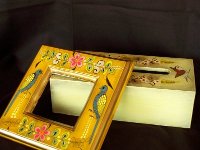
- Hand-painted wooden frame and tissue box cover. Both 1960s.

- Zodiac, Aries hand-painted wooden tray. This piece is simply the best example of their decorative painting technique that I own.
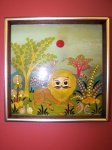
- Not signed 'Sermel', but 'Rosa Maria'. Painted wooden panel framed. Most definitely a Sermel artist.
They also produced two very distinct and heavily copied papel mache icons of Mexican folk art. The first was the triangle skirt doll, with a hat and braided hair. You would almost always see a Tonala bird and flower motif painted on her skirt. The second is the infamous "viejo" peasant dolls, usually old men and women carrying baskets, flowers, water vessels, chilies, etc. If you want one, eBay is full of them. But I should warn you - many of them are not made by Sermel and have been copied and reproduced throughout Mexico for years.
All of Sermel's work was signed as such. However, through collecting, I've discovered that many artisans that worked for Sermel, either left to produce duplicate work on their own or copied on the side.
By the 70s Sergio had left the studio to branch out on his own, both home and abroad, becoming very famous for creating limited edition paper mache birds on his own. Melquiades has sadly passed away and the family owned Sermel carries on, mainly producing large and small paper mache animals for the high end interior design shops and galleries across the globe.
For me, Sermel ranks right up there with the Linares family, Gemma Taccogna and Abelardo Ruiz in defining the modern tradition of Papel Mache in Mexico.
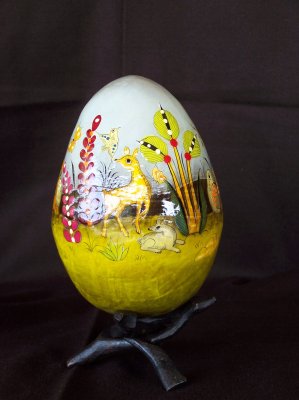
- Small papel mache egg on hand carved stand - 1960s. 15cm high, 11.5cm wide, 35.5cm around.
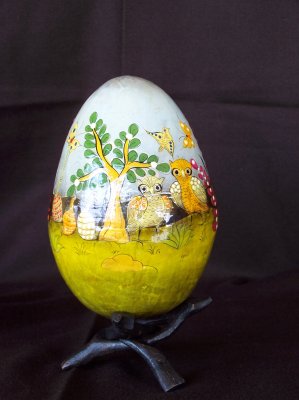
- Second view of small egg.

- Example of how egg was signed.

- Second small egg - 1960s. 16cm high, 11cm wide, 35.5cm around.
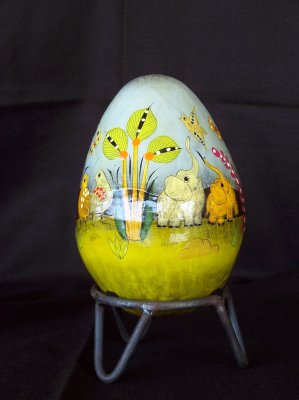
- Another view of the second egg.
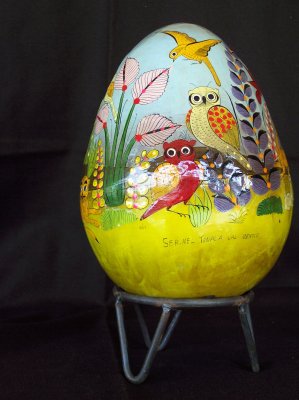
- Large egg - 1960s. 22.5cm high, 16.5cm wide, 52.5cm around.

- Another view of the large egg.

